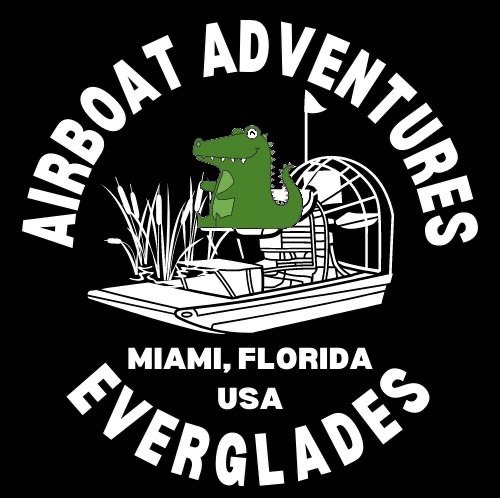- The fragile, intricate ecosystem known as the Everglades is situated in the southern region of the US state of Florida.
- The greatest remaining subtropical wilderness in the contiguous United States is found in the Everglades National Park.
Are you planning on visiting South Florida Everglades? You might be expecting to see Alligators in their native habitat, aren’t you? It is absolutely mesmerizing to see all of these with your own eyes while you are a part of nature. Visiting Everglades is like being a part of nature that surrounds us with the animals of the Everglades.
Interesting fact: Everglades is home to hundreds of different animals.
The unique environment of the Everglades provides a safe refuge for the wildlife that inhabits the wetlands; some of the species here cannot be seen anywhere else in the world.
Reptile and Amphibians
We’re willing to guess that alligators and snakes are the first animals that come to mind when thinking of the fauna you might see in the Everglades. Moreover, although they may seem common to you, alligators are a lot less common than you expect, and it also depends on the time of the year you visit.
The American Alligator
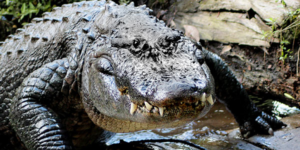
American Alligators once were on the endangered species prior to the enactment of the Endangered Species Act of 1973 list due to overhunting. Moreover, their populations have rebounded well thankfully as they were removed from the endangered species list in 1987.
The American Alligator populations continue to grow all over Florida. If you decide to explore in the cooler months, you can bet you will see these famous reptilian predators getting some sun out on the banks of the pristine Everglades waters.
Banded Water Snake
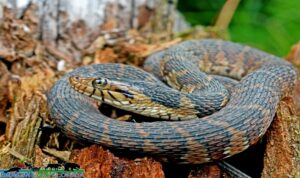
The non-venomous Banded Water Snake is commonly found throughout Florida. Similarly, it is well adapted to the Everglades ecosystem. These snakes live in freshwater habitats like ponds, lakes, marshes, and streams, as their name suggests. Despite their inclination to flee from people, we still don’t advise picking one up because they will easily bite you in defense. Frogs, toads, and fish make up the majority of the diet, with salamanders and tadpoles serving as occasional treats.
Mammals
Inhabited in the Everglades, several mammals can be found there. Moreover, raccoons and opossums can be seen fairly often; while exploring Florida’s renowned wetlands, you might also come across a few less well-known creatures.
Florida Panther
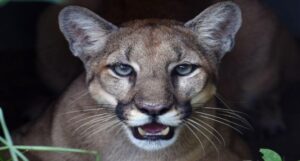
The Florida Panther is an absolute mystery. It is a subspecies of puma, and it is the only known breeding population of puma in the Eastern United States. Therefore, it was listed as an endangered species in 1967, and the population numbers hit their lowest numbers in 1995, with only 20-30 panthers documented in the wild.
Male Florida panthers weigh between 100 and 160 pounds, while females range between 50 and 115 pounds. These cats are typically smaller than their relatives in higher elevations.
Virginia Opossum
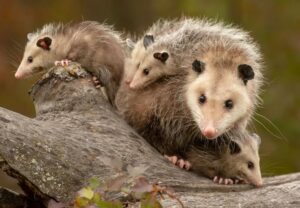
Don’t they look cute? These are North America’s only marsupials, the Opossum. It is a greyish-white creature that is adorably small. Moreover, they are shy and funny-looking furries and you can expect to see them throughout the state of Florida.
Opossums like to hang out in grasslands, wetlands, flatwoods, scrub, and oak hammocks. Therefore, they might be in other urban places, including your backyard. They might look scary to you but these creatures are not at all aggressive. However, don’t forget that they stand their ground if they feel threatened.
Birds
For resident and migratory birds, the Everglades is one of the most significant rest areas and breeding sites. Also, this is a great place for bird lovers as there have been over 350 various bird species sighted and recorded in this area.
Wood Stork
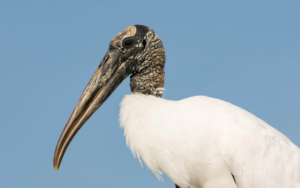
Even from a further distance, you can identify that you are looking at a wood stork by its long legs, featherless head, and prominent beaks. They have a wingspan of about 59-65 inches. Therefore, they are about 3ft long. When it comes to size, there is no obvious difference between males and females.
Typically, their diet consists of fish, frogs, insects, crabs, and other small animals such as young alligators. Similarly, they wade through the shallow swamps and marshes with their beaks slightly open, ready to pounce on any prey that could stray too close to their delicate beaks.
Great Blue Heron
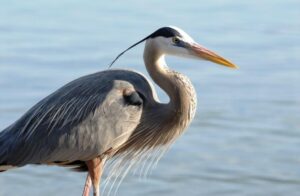
It is known as one of the largest wading birds in North America, as they hold this title proudly. Similarly, they range from 3ft to 4.5 ft, and they are so majestic. They have a massive wingspan of 5.5 to 6.6 ft. You can find them in freshwater lakes and marshes.
Their feathers accentuate the color of bluish gray like the sky and dark blue eyebrows come along with the long dark feathers. Hence, they have excellent hunting skills, striking and even capturing their prey with precision. Interestingly, these birds are mostly monogamous.


